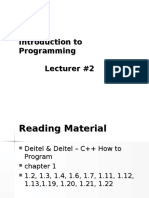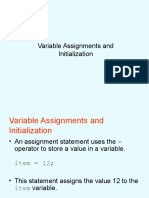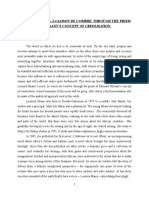0% found this document useful (0 votes)
23 views30 pagesL2 - Variables & Declarations, Data, and Arithmetic Operations
Uploaded by
vevele3809Copyright
© © All Rights Reserved
We take content rights seriously. If you suspect this is your content, claim it here.
Available Formats
Download as PDF, TXT or read online on Scribd
0% found this document useful (0 votes)
23 views30 pagesL2 - Variables & Declarations, Data, and Arithmetic Operations
Uploaded by
vevele3809Copyright
© © All Rights Reserved
We take content rights seriously. If you suspect this is your content, claim it here.
Available Formats
Download as PDF, TXT or read online on Scribd
/ 30



























































































